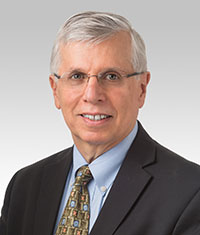Jacob I. Sznajder, MD, is the recipient of the 2019 Edward Livingston Trudeau Medal, which recognizes significant contributions to the prevention, diagnosis, and treatment of lung disease. Dr. Sznajder spoke with the ATS Daily Bulletin about his past research regarding a reduction in capillary wedge pressure and mechanical ventilation with smaller tidal volumes for ARDS patients—and what he’s up to now in an effort to improve treatments for patients with lung treatments.

Jacob I. Sznajder
Q: What has most of your research focused on, and what kind of impact has that had for patients who are suffering from diseases or injuries of the lungs?
A: Most of my research pertains to understanding the mechanisms of lung injury and repair. We focus on preclinical models of lung injury to be translated into clinical studies. Some of our early publications, with my mentor Dr. Larry Wood, defined the physiologic advantage of reducing the capillary wedge pressure while maintaining adequate cardiac output, which resulted in less edema formation and improved gas exchange. This was later confirmed in clinical studies, and it is now the accepted paradigm in the treatment of patients with ARDS.
Our group also demonstrated that in a model of acute lung injury, mechanical ventilation with smaller tidal volumes resulted in less injury than when ventilating with high tidal volumes. These approaches were controversial until studies in patients with ARDS showed that mechanical ventilation with lower tidal volumes resulted in better outcomes.
Q: What are you working on now?
A: We are studying the effects of hypercapnia on the lungs. Earlier studies have proposed that hypercapnia is beneficial in patients with lung injury, which led to the current paradigm of tolerating and encouraging “permissive hypercapnia” in patients with ARDS. We and others have recently reported that hypercapnia is associated with increased mortality in patients with ARDS, in patients with alveolobronchial fistulae, and in patients with COPD, in whom hypercapnia was not corrected. We are pursuing studies to shed light on the signaling mechanisms of hypercapnia to inform and effect a shift in paradigm regarding the need to normalize the CO2 levels in patients with lung diseases.
Another project is focusing on the alveolar epithelial response to influenza A-induced lung injury, focusing on the role of ubiquitination and proteostasis in the lungs and muscle function and how is this affected with age.
Q: Why is it important for you to participate in mentoring?
A: I am committed to mentoring the young generation of physician-scientists and PhD-scientists in our field. At Northwestern University we have a NHLBI T32 training grant where I am actively involved in the training of students, residents, postdoctoral fellows, and junior faculty from diverse backgrounds which reflects our society. I believe in collaborations and multidisciplinary approaches, which have inspired me to learn from the research of our trainees/mentees. Our specialty has been energized by novel technologies that have shed new light on genomics, epigenetics, and proteomics, which we have used to foster a community of scholars to attract talented young scientists to our field to understand and alleviate the burden of respiratory diseases. Now more than ever we need team science and trainees — often the glue that brings researchers together.
Q: What does it mean to you to receive the Trudeau Medal?
A: I am very honored and humbled in accepting this award from the American Thoracic Society, which has been a home for me as a physician-scientist for more than 30 years. It represents the work of so many of my trainees and colleagues, because I see my work and this award as “we” rather than “me” award. For that, I am very thankful to them.
